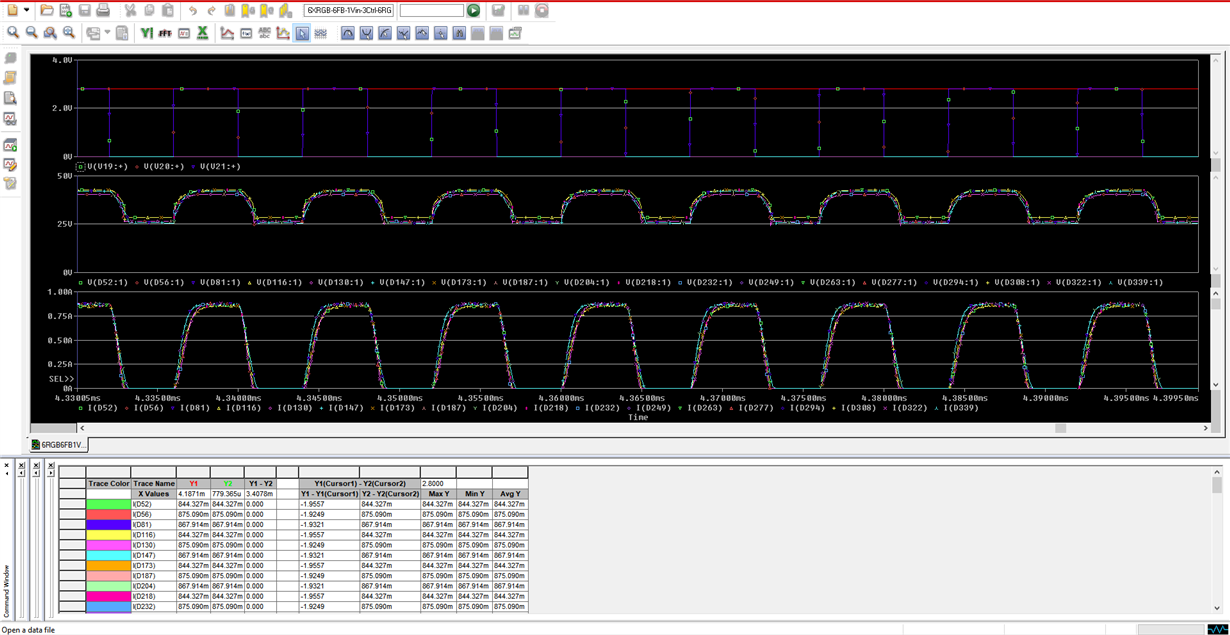Hi, there,
One of our design engineers doesn't understand my simulation result for the schematics in attachment. Per the datasheet dated April 2016-Revised August 2016, in Figure 11 on page 10, The peak Inductor current or the LED current should be equal to the voltage at the IADJ divided by 10 then divided by the Rsense again, the current reading on the L1 should read 17mA per the schematics, but my simulation result shown 858mA reading. Would you please let me know which equation we should be using to verify the simulation result is accurate? I feed 4us period, 2us pulse width of 2.8V PWM signal to the pin PWM of this TPS92515 PSpice model. The Vled has reading of 42V. I put Vin as 48V.
Would you please help me to explain the equation we should be using in the datasheet and plug in the numbers to show the detail? So that I can ensure to our design engineer that the PSpice model that I downloaded from the TI website is the right model to use and the result are trustworthy for our actual production reference.
Thanks,
Terri



